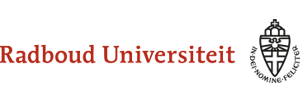American English Phonetics
Another American English Faculty Project
11.1.1 AN Fricatives and Voice
A small minority of AN speakers has the full set of AN fricatives: voiced /v,z,ʒ/, voiceless /f,s,ʃ,x/, and /h/, which has breathy voice. Southern speakers tend to have all of these plus /ɣ/, a voiced velar fricative, alongside /x/, a voiceless velar fricative. The opposition /x/-/ɣ/ is more likely to be maintained intervocalically, as in lachen-vlaggen (/ˈlɑxə/-/ˈvlɑɣə/), than initially, as in chloor-gloor (/xloˑr/-/ɣloˑr/, or /xloˑr/ for both). In the West of the country AN /x/ is pronounced [χ], a uvular voiceless fricative.
Many speakers from the Western provinces, from Friesland and from parts of the East of the country, have no voiced fricatives at all in Dutch. If they do have voiced fricatives, they are more likely to occur between vowels (snavel, mezen) than initially (vee, zee), while /z/ is more likely to occur than /v/. That the absence of /z/ is somewhat of a social marker appears from relatively frequent hypercorrections like /ˈzoeykər, ˈzɔkə/ for suiker, sokken. Those Western speakers who do use /v/, increasingly do so in conformity with the spelling, as appears from pronunciations like /ˈveˑrtəx, ˈvɛiftəx/, which traditionally have initial /f/.
Marginal /ʒ/ is also frequently absent, in which case it is replaced with /ʃ/, so that college and feestje rhyme in non-standard Western accents, /ʃ/ in final position is replaced with /s/ in loanwords like douche, creche. Finally, large numbers of non-standard speakers in the West palatalize /s/ and devoiced /z/, so that /s/, /z/, /ʃ/ and /ʒ/ merge, as in Pasen, Pa z’n, pasje, page – all pronounced ˈpaˑʃə/. Their fricative system consists of /f,ʃ,x,h/ only.
GA /v,ð,z/ contrast in all positions with GA /f,θ,s/. The lenis counterpart of /ʃ/, GA /ʒ/, is absent initially and rare finally (cf beige),
beige
but comparatively frequent in medial position (cf measure, leisure, seizure, Asian).
measure
leisure
While the fortis fricatives are always realized as voiceless fricatives, the lenis ones may lose their friction (i.e. be approximants) or may be devoiced.
